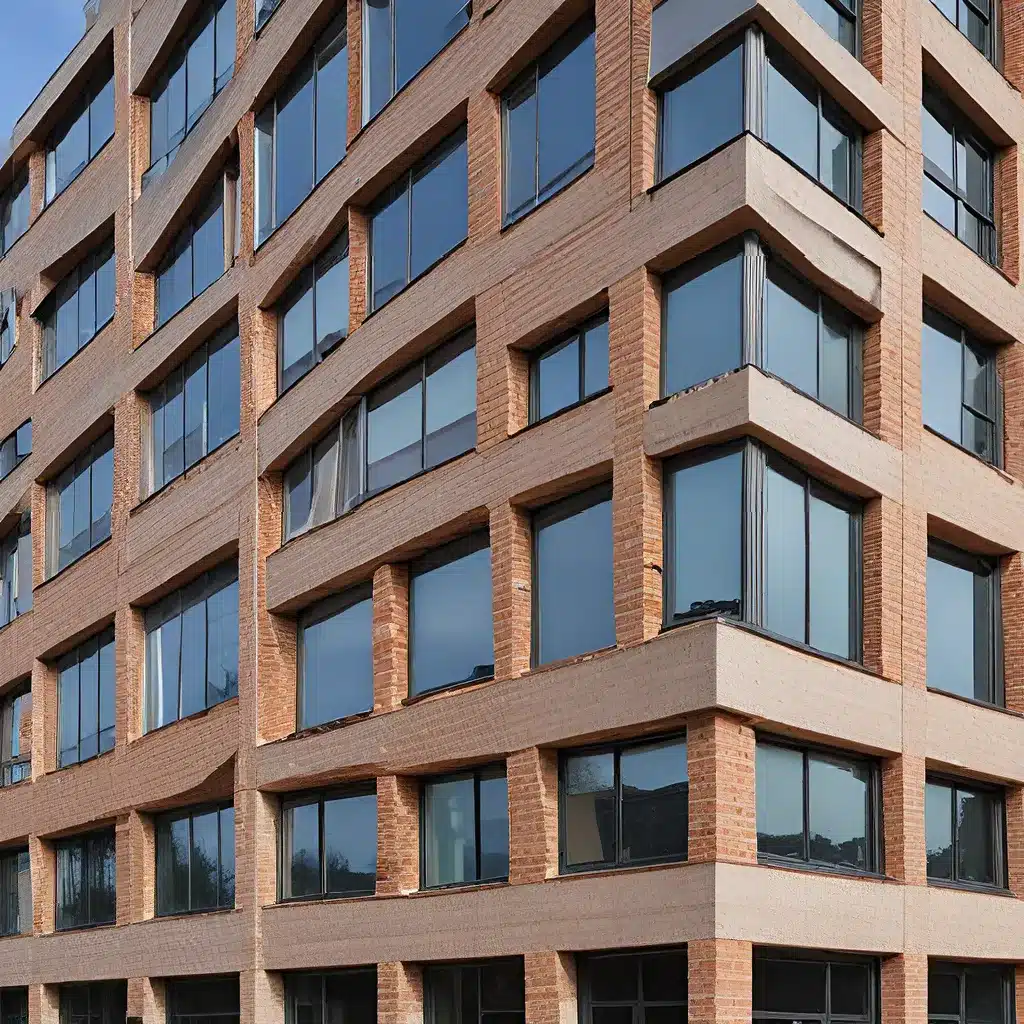
As someone who’s always been fascinated by the intersection of architecture and sustainability, I can tell you that building envelopes are the unsung heroes of the energy-efficient world. These often overlooked components of a structure play a crucial role in minimizing energy consumption and maximizing savings. Let me take you on a journey through the fascinating realm of building envelope optimization, where every inch of insulation and every carefully placed window can make a significant difference.
Unlocking the Power of the Building Envelope
The building envelope, or the physical separator between the interior and exterior of a structure, is like the gatekeeper of energy efficiency. It’s responsible for regulating the flow of heat, air, and moisture, ensuring that the precious energy we use to heat or cool our spaces isn’t simply seeping out through walls, windows, or roofs.
One of the key components of an optimized building envelope is insulation. Proper insulation acts as a barrier, preventing heat transfer and reducing the amount of energy required to maintain a comfortable indoor temperature. Experts suggest that increasing insulation levels in walls, attics, and other envelope components can lead to significant energy savings, often ranging from 10% to 50% depending on the climate and the specific building characteristics.
But insulation is just the tip of the iceberg. The strategic placement and design of windows can also have a profound impact on a building’s energy performance. Energy-efficient windows with low-emissivity (low-E) coatings, double or triple glazing, and tight seals can drastically reduce heat transfer, minimizing the energy needed for heating and cooling.
And let’s not forget about the often-overlooked role of airtightness. Ensuring that the building envelope is properly sealed and that there are no unintended air leaks can make a world of difference in energy consumption. Sealing cracks and gaps around windows, doors, and other penetrations can improve indoor air quality, reduce drafts, and enhance the overall efficiency of the building.
The Science Behind Building Envelope Optimization
Now, I know what you might be thinking: “This all sounds great, but how do we actually go about optimizing a building envelope?” Well, my friend, it’s all about understanding the science behind heat transfer and energy flows.
One of the fundamental principles at play is the concept of thermal bridging. Thermal bridges are areas within the building envelope where there is a higher rate of heat transfer, often due to the use of materials with high thermal conductivity, such as steel or concrete. Identifying and mitigating thermal bridges is crucial for improving the overall thermal performance of the envelope.
Another key factor is the R-value, which measures a material’s resistance to heat flow. The higher the R-value, the more effective the insulation. By carefully selecting insulation materials with optimal R-values and strategically placing them within the envelope, we can create a highly efficient thermal barrier.
But it’s not just about the physical properties of the materials. Airflow and ventilation also play a critical role in building envelope optimization. Proper air sealing and controlled ventilation can help regulate indoor air quality, prevent moisture buildup, and ensure that the energy-saving benefits of the envelope are fully realized.
Innovative Approaches to Building Envelope Design
As the demand for energy-efficient buildings continues to grow, we’re seeing some truly innovative approaches to building envelope design. One such example is the concept of passive houses, which take the idea of a high-performance building envelope to the extreme.
Passive houses are designed to require minimal energy for heating and cooling, relying on the building envelope’s exceptional thermal insulation, airtightness, and strategic window placement to maintain a comfortable indoor environment. Research suggests that passive houses can achieve energy savings of up to 90% compared to traditional buildings, making them a shining example of what’s possible when we push the boundaries of building envelope optimization.
But the innovation doesn’t stop there. Dynamic insulation is another cutting-edge concept that’s gaining traction in the industry. This innovative approach involves using materials that can actively regulate the flow of heat, adapting to changing environmental conditions and occupant needs. By responding to real-time changes, dynamic insulation can further enhance the energy efficiency of the building envelope.
And let’s not forget about the potential of smart building technologies. By integrating advanced sensors, controls, and automation systems into the building envelope, we can create a truly intelligent and responsive environment. Firewinder, for example, offers innovative solutions that leverage smart technology to optimize building envelope performance, maximizing energy savings and occupant comfort.
Overcoming Challenges and Embracing the Future
Of course, the journey to optimizing building envelopes is not without its challenges. There are often trade-offs between energy efficiency, cost, and aesthetics that need to be carefully balanced. And the variety of building types, climates, and regulatory requirements can make it a complex and nuanced field.
But as I’ve learned, the potential for impact is simply too great to ignore. Every improvement to the building envelope, no matter how small, can have a ripple effect on energy consumption, greenhouse gas emissions, and the overall sustainability of our built environment.
And the good news is that the field of building envelope optimization is rapidly evolving, with new materials, technologies, and design approaches emerging all the time. Ongoing research and innovation are likely to continue to push the boundaries of what’s possible, making high-performance, energy-efficient buildings more accessible and affordable for all.
So, my fellow sustainability enthusiasts, I encourage you to keep an eye on this exciting space. Stay curious, explore the latest developments, and join me in the quest to harness the power of the building envelope for a greener, more energy-efficient future. Who knows, maybe you’ll be the one to come up with the next breakthrough that revolutionizes the way we design and construct our built environment.

